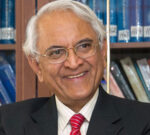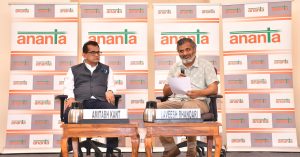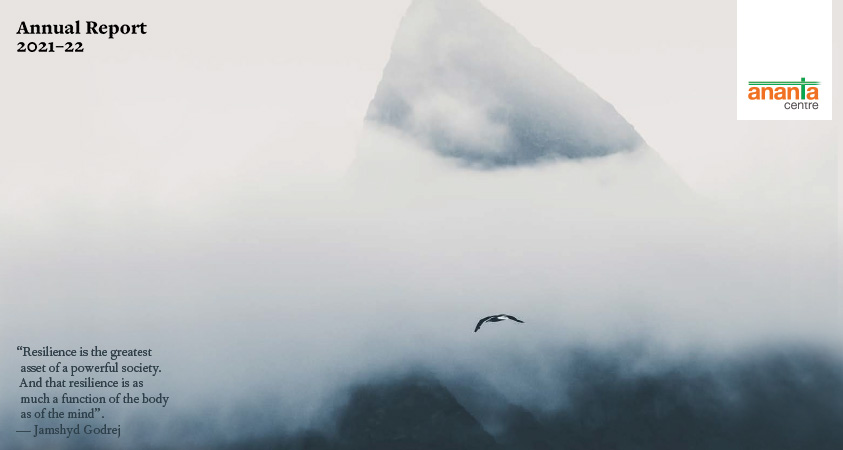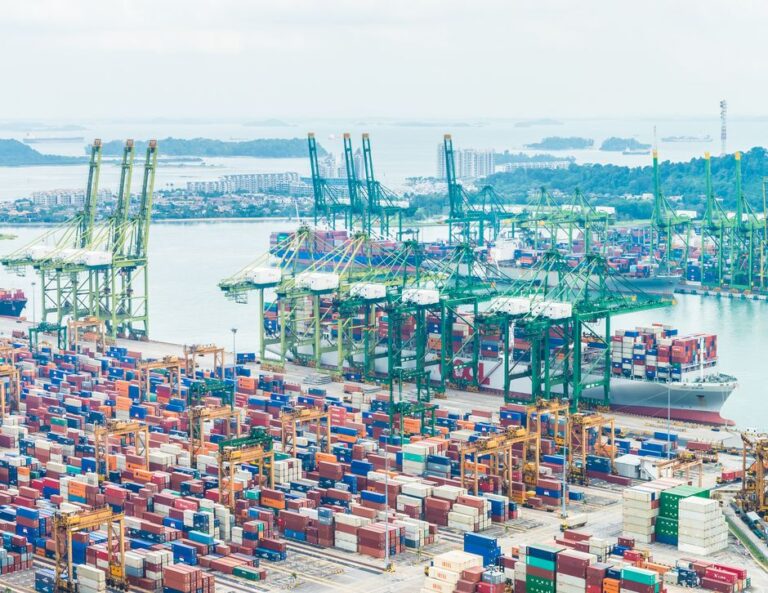Overview
• Russia’s National Security Strategy looks inward
• India & Russia rediscover convergences
• As India disavows non-alignment, Russia embraces it
• Putin bats for Sputnik
Russia’s National Security Strategy looks inward
On July 2, the Russian president signed off on the country’s new National Security Strategy (NSS), succeeding NSS 2015. NSS 2021 has apparently been under discussion in the Russian Security Council (which President Putin chairs) since mid-2020. Presumably, Covid 19 and other global uncertainties delayed its finalization.
NSS 2021 differs significantly from NSS 2015 in tone, emphasis and substance. It sees grave challenges to Russia’s national security from efforts of the West to contain and isolate Russia, threaten its territorial integrity, undermine its sovereignty, weaken its economy, disrupt its bilateral relationships and multilateral economic arrangements, exploit its socioeconomic problems, stoke social tensions and instigate political change. In this diatribe against the West, however, the US is not specifically mentioned. The only reference to the United States is of its withdrawal from arms control treaties.
The strategy document paints a jaundiced picture of the global geopolitical churn. It draws attention to stagnation and recession of the world’s leading economies, the declining stability of the global monetary and financial system, the intensified struggle for access to markets and resources, in which protectionist measures and sanctions are increasingly being used. It rails against the “circumvention of established norms of international law” by groups of countries, which are trying to propagate their own “rules-based orders”. It asserts that the dismantling of arms control treaties and agreements have aggravated global tensions. It draws attention to the danger of armed conflicts escalating into local and regional wars, “including those involving nuclear powers” (possibly a reference to both India-Pakistan and India-China tensions).
NSS 2015 had projected a distinctly more upbeat self-perception of Russia’s standing in the world. By the end of 2015, Russia had countered the initial fallout of the annexation of Crimea, by its activities in the G20 and BRICS, its role in the Iran nuclear deal and by exploiting the unexpected opportunity of military intervention in Syria. This is reflected in the confident assertion in NSS 2015 of Russia’s success in “resolving the most important international problems, settling military conflicts, ensuring strategic stability and the supremacy of international law in interstate relations”, thereby “enhancing its role in shaping a polycentric world”.
But the most noteworthy change in 2021 from 2015 is the recognition that Russia’s principal national security challenges lie within, and a consequent re-ordering of priorities for ensuring national security. The top strategic national priority is described as “preservation” of the Russian people, development of their human potential, ensuring a decent life for them, creating improved conditions for their health, education and housing. There is a clear message that strengthening economic vibrancy, ensuring better governance and building comprehensive national strength are the primary drivers for enhancing Russia’s national security and external influence. There is a recognition of popular disenchantment with widening socioeconomic disparities, falling real wages, increasing taxes, worsening health and education infrastructure, deteriorating governance and pervasive corruption in the executive and judiciary. The NSS recognizes the need for effective interaction between the state and civil society.
The strategy calls for measures to facilitate the transition of the Russian economy from one mainly exporting primary raw materials and agricultural products to one processing them, developing and strengthening new high-tech industries and markets. The use of low-carbon technologies should increase the competitiveness of the Russian economy. The document effectively spells out a blueprint for an “Atmanirbhar Russia”, addressing regional and sectoral economic imbalances, overcoming infrastructure constraints, reducing the dependence on imported technologies, equipment and components and localising production in Russia, so that the domestic market is “saturated with Russian-made goods”. It calls for making budgetary outlays for science and technology comparable with those in advanced countries, so that Russian strengths in nanotechnology, robotics, genetic engineering, quantum computing, artificial intelligence, big data processing, materials science and others can be further enhanced.
The incongruity of an unbalanced economy and poor socioeconomic governance with the other attributes of Russian power has long been commented upon, both within and outside the country (most recently by President Biden). Most of the objectives outlined in NSS 2021 have figured in various plans and statements, including by the President, over the years. Implementation has been prevented by apathy and corruption at the bureaucratic and political levels. It remains to be seen whether their incorporation into the National Security Strategy and the pressure of popular discontent will make any difference this time.
The NSS emphasises the need for indigenisation of critical ICT equipment. Asserting that the major threats from cyberattacks come from abroad, it makes the point that use of foreign IT and communications equipment will always threaten information security. Hence, “critical information infrastructure facilities” of the country, including those using advanced artificial intelligence and quantum computing technologies, should “prioritise use of Russian technologies and equipment”. Contrary to the general impression that Russia will go along with Chinese vendors and technologies for ICT solutions, this injunction equates all foreign supplies of critical technologies as potential national security risks. Recent public comments by President Putin support this inference.
The foreign policy section of NSS 2021 is short, but also significantly departs from its predecessors. Its title includes strategic stability (arms control and restraints on deployment) and “mutually beneficial international cooperation”, which replaces “strategic partnerships” in NSS 2015. This may be a recognition of the contemporary reality of issues-based partnerships replacing more rigid strategic partnerships. There is the reiteration of Russia’s “consistent, independent, multivector, open, predictable and pragmatic” foreign policy, as well as its commitment to the centrality of the UN and its Security Council in upholding international law, peace and security. However, it declares that Russia may take “symmetric and asymmetric measures” in response to escalating “unfriendly actions” against it (isolation, sanctions and other pressures).
Among regional cooperation initiatives, NSS 2021 mentions the Greater Eurasian Partnership (GEP). This is a “vision” unveiled by President Putin in 2015, which envisages a Russia-coordinated effort to draw countries of Eurasia into economic partnership, moving towards integration at a pace, and to the level, that individual countries consider compatible with their interests. Though GEP is meant for all of Eurasia, most elaborations of this concept concentrate on Central, South, Southeast and East Asia, as the starting point of the exercise. At the heart of this concept is a cooperative order, in which no country would impose its dominance. Over the years, Russian analysts who have expanded on this idea have identified the importance of drawing India, China and Japan into this effort. Many have also explicitly pointed out that persuading China to give up its hegemonistic inclinations would be critical to the success of such a venture. Though there has been a proliferation of Russian academic writing on GEP, Russian diplomacy has not made any perceptible progress in giving practical shape to it. The elevation of GEP to an NSS objective may give it a new impetus.
On relations with individual countries beyond the post-Soviet space, only two countries are mentioned: China and India. Both are fitted into one sentence: “developing a comprehensive partnership and strategic interaction with the People’s Republic of China and a particularly privileged strategic partnership with the Republic of India, including for the purpose of creating reliable mechanisms in the Asia-Pacific region to ensure regional stability and security on a non-aligned basis”. The minimalist description of relations with China merits attention. Also intriguing is the reference to regional stability and security mechanisms in the Asia-Pacific as an objective to be pursued with India – “on a non-aligned basis” i.e. a broad-based effort, not merely an adjunct to US plans in the region. Taken together with the promotion of the GEP, this could be interpreted as an implicit recognition of the proposition that India’s EAM Jaishankar has been incorporating in his public statements – that a multipolar world has to incorporate a multipolar Asia. Again, we need to match these words with actions on the ground – specifically, whether there is a more pragmatic Russian approach to discussions with India on the Indo-Pacific (whatever the nomenclature they may wish to use).
The NSS confirms Russia’s commitment to “multidisciplinary cooperation” within the Shanghai Cooperation Organization and BRICS, as well as within the RIC (Russia, India, China) framework.
India & Russia rediscover convergences
As part of the preparatory exercise for the India-Russia summit, due in India later this year (Covid willing), Indian External Affairs Minister (EAM) Jaishankar visited Moscow on July 8-9. He co-chaired, with a Russian Deputy PM, the joint commission on economic cooperation, which feeds into the summit deliberations and decisions. More attention was, however, focussed on the political content of the visit, since the wide-spread impression from FM Lavrov’s visit to India and Pakistan in April was of a dilution of relations.
The public utterances during the visit, including at the joint press conference of the two Foreign Ministers and the EAM’s speech at a prominent Russian think tank (IMEMO) conveyed a warmer picture. The usual tributes were paid to the significance and the endurance of the partnership and the EAM described the talks as having been “warm, comfortable, comprehensive and productive. But the warmth and comfort were also registered at the press conference in the now-ubiquitous measure of diplomatic relations – body language.
An important indicator of the rediscovery of some convergences was the announcement that a 2+2 mechanism of Foreign and Defence ministers would be activated this year. This mechanism was agreed upon in a telephone conversation between PM Modi and President Putin in end-April.
Given the backdrop of the chaos engulfing Afghanistan in the wake of the precipitate American withdrawal, the situation in that country was discussed at some length. EAM Jaishankar drew attention to the earlier close cooperation of India, Russia and Iran (in the 1990s and early 2000s), also mentioning, in passing, that he had stopped in Tehran en route to Moscow. Much has been written and said about Russia excluding India from its Afghanistan initiatives. The fact is that those initiatives, in close coordination with the US, China and Pakistan, were focussed on bringing the Taliban to the negotiating table and eventually into the mainstream of Afghan politics. Each of the four countries had different motivations in coming together for this. India did not fit into this scheme, because of its attitude to the Taliban and because Pakistan would not have countenanced Indian participation. Once the objective of American withdrawal (which was Russia’s principal concern) has been achieved, there are more commonalities in the Russian and Indian concerns on Afghanistan. The ministers said as much in their utterances.
Syria, Libya and Arctic were also described as areas of shared interest and cooperation. The EAM said defence collaboration has been strengthened by the “very visible” Russian interest in the Make in India programme.
The Indo-Pacific was another subject that was discussed, with FM Lavrov steering clear of his usual fulminations about “disruptive US-led geopolitical structures” in the region. The Russian MFA, in its curtain-raiser on the visit, said that the two Foreign Ministers would discuss “approaches to forming a reliable and indivisible security architecture in the Pacific and Indian oceans” – a part-way acknowledgement that there is an Indian perspective worth discussing. Lavrov said they had discussed the “processes unfolding in the Asia-Pacific Region” and had agreed on the “central role of ASEAN” in the security architecture of the region. EAM Jaishankar also confirmed India’s commitment to “the centrality and unity of the ASEAN” in the context of the Indian view-point on the Indo-Pacific. “ASEAN centrality” has become a sort of Linus blanket for all shades of political opinion (and apprehension), with its comforting connotation of a calmer Indo-Pacific dialogue than the disruptive one threatened by the Trump Administration’s Indo-Pacific posture. In practical terms, the centrality of ASEAN may be a geographical fact, but it is no more than political fiction to project ASEAN as the central player in fashioning a security equilibrium in the region, given that countries of the region differ in the levels of their allegiance to, or apprehensions of, China.
EAM Jaishankar said at the press conference that, because of the larger India-Russia geopolitical compatibility, India sees a more active Russian presence and participation in the region as “something very, very important”. In his IMEMO speech, he was more explicit: “a multi-polar world must have a multi-polar Asia as an essential constituent”. As the Russian NSS 2021 indicates, the Russian leadership may agree on this point – the Greater Eurasian Partnership concept indicates it – but would not be willing to explicitly endorse it.
Jaishankar’s hosts at IMEMO would have been happy to hear him articulate a different perception of Russia from the “Upper Volta with rockets” image, or its many variants, widely prevalent in the West and among much of Indian (and expatriate Indian) academia. He said that its “inherent strength as a Eurasian and Euro-Pacific power and its long-standing global status …. makes it unmistakably critical to the world order”, that it has “regularly demonstrated an ability to influence outcomes across regions and issues” and that “its salience in domains that matter, like energy or technology” is particularly noteworthy.
The economic content of the discussions in Moscow included an early start (again, Covid willing) of negotiations for a free trade agreement with the Eurasian Economic Union, some agreements apparently on the anvil for projects in the Russian Far East under the $ 1 billion Indian line of credit that was announced in Vladivostok in 2019, nuclear energy (construction has commenced on the fifth unit of the Kudankulam Nuclear Power project) and hydrocarbons, where new potential investments and long term commitments were discussed. In his speech at IMEMO, EAM Jaishankar also talked about the possibility of new partnerships, “including in trilateral formats” and in connectivity through the Northern Sea Route and the Chennai-Vladivostok maritime corridor.
The most important connectivity project discussed was the International North South Transport Corridor. While much foot-dragging and hand-wringing on all sides has dogged this project, Indian and Russian minds should have been concentrated by the recent American promotion of an Uzbekistan-Afghanistan-Pakistan corridor. Besides impacting on the viability of the INSTC, this corridor would have other unwelcome strategic implications for India.
As India disavows non-alignment, Russia embraces it
In what may go down as one of the little ironies of history, the successor state of a once-mighty superpower applied for admission (albeit as an observer) to an organisation that was founded to protect the autonomy of its members from the superpowers. And the country today chairing the organisation was a relatively minor constituent of the superpower.
In May this year, Russia’s FM Lavrov thanked Azerbaijan’s President Aliyev (the son and heir of a former Soviet Politburo member) for supporting Russia’s application for observer status in the Non-Aligned Movement (NAM). Russia’s admission was confirmed at a NAM ministerial meeting on July 13-14, chaired by Azerbaijan. In his speech at the meeting, the Russian representative (a Deputy Foreign Minister) hailed the “rich experience of cooperation” between Russia and NAM in the UN, noting that Russia supported or co-sponsored all NAM resolutions at the General Assembly and the Human Rights Council, and that NAM member-states have similarly supported Russian initiatives in these forums. He declared that NAM “remains the uncontested platform for building a durable multipolar world order”, enabling the new power centres of Asia, Africa and Latin America to retain their independence from the “self-proclaimed lights of democracy”, which seek to impose “non-consensual rules-based orders”, undermining the UN-centred international architecture. This is a remarkable tribute to a Movement still in search of a post-Cold War political compass. But it speaks of the fresh Russian thrust to resuscitate the links that the Soviet Union had built with the developing world, which had largely been lost in the eurocentrism of the post-Soviet years (except for some resource-rich, conflict-prone African countries).
Other than Georgia and Moldova, every constituent of the former Soviet Union is now either a member or observer of NAM: Belarus, Azerbaijan, Turkmenistan and Uzbekistan are members; and Armenia, Kazakhstan, Kyrgyzstan, Tajikstan and Ukraine are observers.
Putin bats for Sputnik
The third wave of Covid-19 in June-July hit Russia hard, especially because it spread to towns and regions beyond the main population centres of Moscow and St Petersburg. After seemingly plateauing in the period from March to May, the caseload rose steeply in June and July. Death rates and hospitalization also rose steeply. The usual combination of complacency, corona fatigue and vaccine hesitancy was blamed, as popular discontent grew over mismanagement of the pandemic. Despite the easy availability of the Russian-produced vaccines, widespread vaccine hesitancy limited their uptake. Russian authorities blamed this on foreign propaganda against Russian vaccines, through the social media. The government’s vaccine advocacy is mainly through the mainstream media, while large sections of the population pick up their news and views on the social media. The Russian establishment’s skills at perception management through the social media appear to lag those of the Chinese.
Efforts to overcome the widespread vaccine hesitancy have included measures like those in France to make vaccination compulsory for continued employment. In his annual Direct Line – a nationally televised marathon show in which President Putin takes questions and comments from the Russian public (one of the few mainstream shows with a large nationwide audience) – he spent considerable air time advocating vaccination as an act of civic responsibility, highlighting the safety and efficacy of the vaccine and admitting for the first time that he had taken the Sputnik vaccine – no video exists of his vaccination and he had thus far steadfastly refused to divulge which of the three Russian-developed vaccine he had taken.
Whether due to these concerted efforts or fear of the dreaded Delta variant, vaccination uptake appears to be rising. As per WHO statistics, infection and death rates again appear to have plateaued.
*******
The previous issues of Russia Review are available here: LINK
…………………………………………………………………………………………………………………
(The views expressed are personal)
The Author can be reached at raghavan.ps@gmail.com
…………………………………………………………………………………………………………………
























